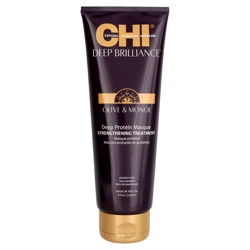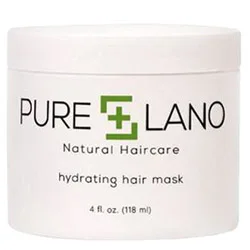Determine Your Hair's Porosity
Hair's porosity refers to how much moisture it can retain. Certain hair types like curly hair may be impacted by porosity more than others due to a lack of moisture, but porosity can impact other hair in different ways. You may be wondering what contributes to your hair's state of porosity. While your natural base level of porosity can be hereditary, chemical treatments and frequent heat styling can also be a factor. This can cause porosity because it creates gaps and tears in the hair that make it possible for the cuticle to stay open and moisture to escape through.
How to Determine Your Hair's Porosity Level
To test your hair's porosity level, start by taking a dry, clean strand of your hair and place it into a cup of water. If it takes a few minutes to sink to the bottom then your hair ranks on a medium level of porosity, so you're in the clear. A strand that floats to the top is likely low in porosity, whereas hair that sinks to the bottom right away is highly porous.
- Highly porous hair means the cuticle is raised. This type of hair suffers from breakage and is generally weaker. Telltale signs of high porosity include hair that retains excessive amounts of water and grabs onto color quickly causing it to look uneven.
- Medium porosity is the sweet spot for hair because it lets moisture in and keeps water out.
- Low porosity is where the hair's cuticle remains flat and closed. Because of this, it can make it difficult for hair to absorb moisture as products tend to just coat the outer layer of the hair rather than sink in.
The reality is that you can't always hit the reset button on your hair's porosity level. So, what is the best course of action to take in attempting to counteract the effects of porosity? For instance, since products tend to sit on top of the hair that has a low porosity level, build up can take place. To tackle this, the first step that you can take is to consider using a micellar shampoo. This type of shampoo is safe for everyday use and can help remove impurities found in the hair. When conditioning low porosity hair, apply conditioner to hair that is already wet, then work it into the hair in sections, while continuing to add water. Diluting the conditioner this way, helps it get more easily absorbed by the cuticle.
For damaged hair that's highly porous, turn to a weekly hair mask that is protein based. This can help reduce split ends and breakage thanks to the protein found in the treatment. A leave-in conditioner can also help with moisture and making hair more manageable so that you don't have to wrestle with your brush when it comes to detangling. It's best to avoid humectant products with a lot of glycerin. These products attract water into the hair and weigh it down. Instead, focus on hydrating the hair with a silicone free conditioner and include a protein-based deep conditioner into your weekly or bi-weekly routine to help strengthen your strands.



 write a review
write a review


